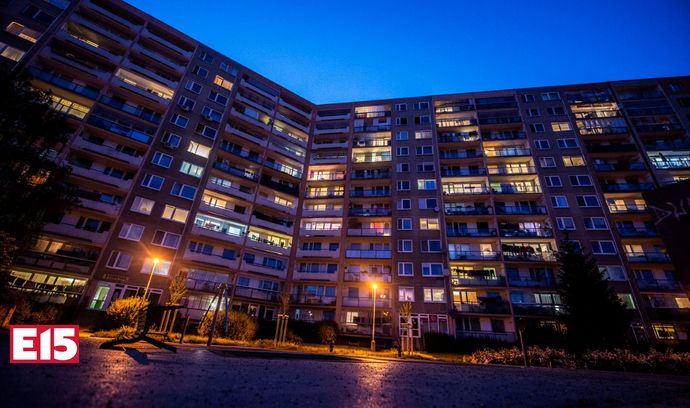After the onset of major storms that have exposed New York’s weaknesses in the face of climate change, the city draws up a plan that aims to install a system of walls and gates of 1.45 billion dollars to protect it of sea level rise.
Super Storm Sandy in 2012 was the trigger for the establishment of the East Coast Resiliency Project (ESCR), which stretches four kilometers along the Lower Manhattan coastline. Hurricane Ida, which ravaged parts of the city this year, added an additional emergency.
During Storm Sandy, which killed 44 town residents while affecting another 110,000 and leaving $ 19 billion in damage, water levels rose more than 2.5 meters, according to Tom Foley, commissioner by interim design and construction in New York.
The completed wall will reach up to 50 meters, said Tom Foley. The project will also include gates to prevent water from seeping into Manhattan, the city with the densest population in the United States.
The wall between 23rd and 20th Streets has already been built, an area where the East River and residential housing are narrowest.
Further down, where the land permits, the project will include a hilly park that will serve as a protective wall, as well as a wharf, an esplanade, cycle paths, benches and green spaces.
The city will also plant some 1,800 trees, nearly double the number destroyed by construction on the project, along with 1,000 more in the neighborhood, said Sara Nielsen of the New York City Parks Department. Some 500 new trees have already been planted.
A new underground drainage system will improve the drainage capacity of the sewer system, while the construction of an electrical substation is expected to prevent a multi-day power outage that occurred during Sandy.
This major super storm of 2012 turned out to be one of the worst to hit the United States in this century, with Katrina in 2005, which devastated New Orleans, and Harvey, which struck Houston in 2017. .
Adaptable protections
But the project is far from sufficient: the approximately 323 kilometers of coastline of New York State face forecasts of sea level rise of more than 60 centimeters by 2050 and nearly 1.8 meters by the end of the century.
According to Jainey Bavishi, who heads the mayor’s office for climate resilience, the city is investing in a “tiered strategy”.
« We build coastal guards where possible to keep water out, but we also recognize that we won’t be able to keep water out everywhere.“Jainey Bavishi told AFP.
She explained that the protections currently under construction are ” made to be adaptable« .
« So if the sea level rise and storm surge projections worsen from what we think they are currently, we can do an elevation to the wall to add additional protection.. »
Manhattan’s many buildings as well as critical infrastructure have also been strengthened, explained Jainey Bavishi, with limited construction in high-risk areas and working with residents and small businesses to minimize the impact of extreme weather events.
An ambitious resilience strategy
Some citizens are dissatisfied with the project and local associations have filed appeals against it. Unless there are delays due to these obstacles, the project is expected to be completed by 2026.
« I think it’s a good idea but things are moving slowly so I don’t know how … it’s going to be effective“Said a resident.
The ESCR is just one component of a larger project announced in 2013, when the city unveiled a nearly $ 20 billion plan aimed at “climate resilience”.
But this price is only a ” deposit« , dit Jainey Bavishi. , Resilience is a process, not an outcome. »
The US Congress recently approved a massive $ 1.2 trillion social spending plan, which will allocate about $ 550 billion in climate and clean energy tax incentives.
« I think our overall climate resilience strategy is one of the most ambitious in the United States and potentially the world.“Said Jainey Bavishi.
–

